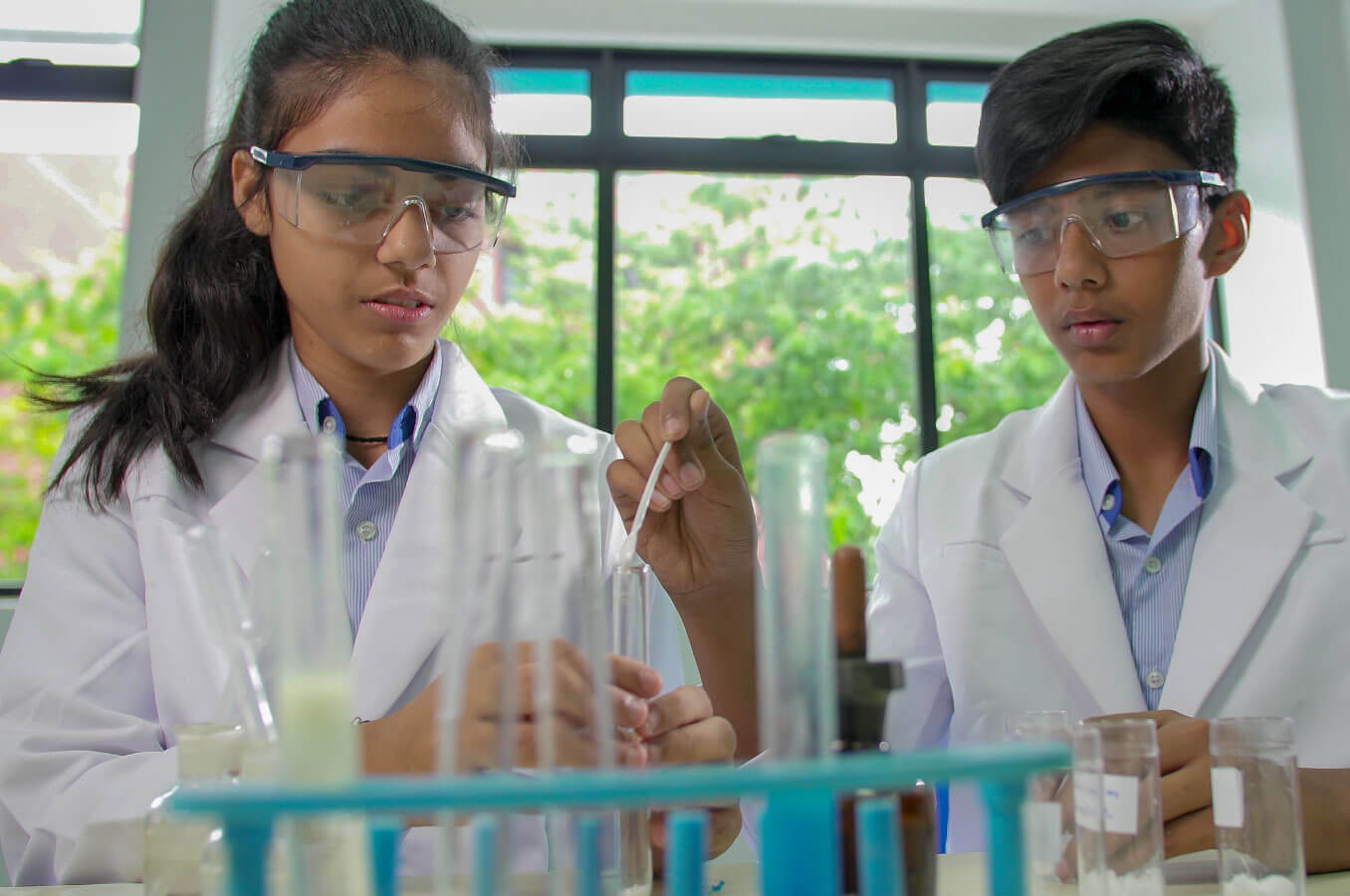Remember when classrooms had just a blackboard, some chalk, and an overworked teacher? Well, those days are fading fast! Thanks to Robotics Education and AI Integration, learning has taken a futuristic leap.
Imagine students reading about science and building robots that bring concepts to life. Educational technology has transformed classrooms into creativity, innovation, and hands-on learning hubs. But how exactly does Robotics Education reshape traditional teaching, and how do humans and AI coexist in this evolving landscape? Let’s explore.
How Robotics is Revolutionizing Education!
- Learning Becomes Fun
Let’s be honest—traditional learning can sometimes be a snooze fest. But what if students could code a robot to navigate a maze instead of filling out another worksheet? Robotics Education brings in an element of play, making even the most complex topics engaging.
Think about it—would you rather read about physics formulas or watch your own robot move based on them? That’s the kind of interactive learning that makes students excited about school! With robots in the classroom, students engage in interactive learning that blends play with education. Who wouldn’t want to code a robot to solve a maze instead of solving yet another worksheet?
- Problem-solving & Critical Thinking Skills
Robots don’t always work perfectly on the first try (even expert programmers struggle!). But that’s the beauty of it. When students build and program robots, they learn through trial and error—experimenting, failing, tweaking, and finally succeeding.
This hands-on experience develops logical thinking, creativity, and resilience—all crucial skills for real-world problem-solving.
- More Engagement, Less Passive Learning
No more staring blankly at a board while a teacher lectures. With Robotics Education, students are hands-on—coding, assembling, and troubleshooting.
This active participation boosts curiosity and confidence, especially in STEM (Science, Technology, Engineering, and Mathematics) subjects. Even students who typically struggle in math or science find themselves engaged and motivated when they see concepts come to life!
- Prepares Students for Future Careers
The world is shifting toward automation, AI-driven industries, and robotics. So, doesn’t it make sense to prepare students for these changes?
By integrating robotics into education, students gain early exposure to AI, automation, and programming—skills that will be in high demand in fields like engineering, artificial intelligence, and technology.
Want to ensure your child is ready for the future? Take secondary schools admission where the administration is focused on making students ready for future jobs!
Human-Robot Interaction in the Classroom
Now, let’s address the big question—are robots replacing teachers? Absolutely Not.
Instead, Robotics Education complements human teaching. Here’s how:
1. Personalised Learning at Its Best
AI-powered robots adapt to different learning speeds. Fast learners can explore advanced concepts, while those who need extra time get additional guidance. It’s like having a personal tutor—but one that never gets tired of explaining fractions!
2. Cultivating Creativity & Teamwork
Building and programming robots isn’t a solo mission. Students work in teams, enhancing their collaboration, leadership, and communication skills. Whether designing a robotic arm or coding an AI assistant, teamwork is key.
3. Smart Assessment & Feedback
No more waiting weeks for test results! AI-driven tools assess students in real-time, offering immediate feedback. This helps teachers understand which concepts need reinforcement, making education more efficient and tailored.
Robotics as a Learning Tool
More Than Just Coding
Think robotics is just about programming? Think again! Robotics enhances learning across multiple subjects:
✅ Mathematics – Understanding angles, speed, and distance calculations.
✅ Physics – Exploring motion, force, and mechanics.
✅ Language – Robots that process speech can help with communication and even language learning.
This is why many schools following the CBSE curriculum are incorporating robotics into their lesson plans.
Also Read: The importance of Co-curricular activities at Bangalore International School
Real-World Applications of Robotics in Education
Sure, learning robotics is fun, but how does it connect to the real world? Why should students care about programming a robot or understanding AI? The answer is simple: these skills directly translate into future careers, innovation, and everyday problem-solving.
1. Robotics in Engineering & Automation
One of the most obvious applications of Robotics Education is in engineering and automation. The world is rapidly moving toward automation, with industries from manufacturing to healthcare relying on robots for efficiency.
By introducing robotics in schools, we’re preparing students for high-demand careers in engineering, automation, and artificial intelligence. Some of the best CBSE schools in Nagpur are already incorporating robotics into their curriculum to give students an early edge.
2. Healthcare: AI-Powered Medical Assistance
Believe it or not, robotics and AI are already playing a crucial role in healthcare. From robotic-assisted surgeries to AI-driven diagnosis tools, the medical field is seeing rapid advancements.
How does this relate to students?
- Medical students are using AI-powered simulations to practice surgeries before working with real patients.
- AI-driven robots help analyse complex medical data, improving diagnosis and treatment plans.
- Exoskeletons and robotic prosthetics are changing lives, allowing people with disabilities to move independently.
By integrating AI and robotics into education, we’re not just preparing future engineers—we’re also training future doctors, researchers, and medical innovators.
3. Robotics in Agriculture: Feeding the Future
With the global population growing, food production must become more efficient and sustainable. That’s where robotics and AI-driven automation come in.
- Autonomous tractors and drones help farmers monitor crop health and optimise irrigation.
- AI-powered sensors analyse soil quality, predicting the best conditions for planting.
- Automated harvesting robots reduce food wastage and increase efficiency.
By introducing Robotics Education early, students can contribute to solving real-world agricultural challenges—helping us grow food more efficiently and sustainably.
5. Smart Cities: AI in Urban Development
Imagine living in a city where traffic lights adjust automatically to reduce congestion, smart waste bins alert authorities when they need emptying, and AI-driven security systems ensure safety.
That’s not science fiction—it’s happening right now with the help of AI and robotics!
- AI-driven traffic control improves road safety and reduces fuel wastage.
- Autonomous delivery robots and drones are changing the way we receive goods.
- Smart homes use AI assistants like Alexa and Google Assistant to automate daily tasks.
As students learn about robotics and AI, they can contribute to designing and building smarter, more efficient cities. This knowledge can lead to careers in urban planning, AI development, and sustainable infrastructure.
Human-Robot Interaction in the Classroom
Are Robots Replacing Teachers? No Chance!
This is a big concern, but let’s set the record straight—robots won’t replace teachers. Instead, they work as assistants, helping educators personalise learning and make lessons more interactive.
Here’s how:
✔️ Personalised Learning: AI-powered tools adapt to different learning speeds. Fast learners can dive deeper, while those needing extra help get personalised guidance. It’s like having a tutor who never gets tired!
✔️ Teamwork & Collaboration: Robotics projects require students to work in teams, teaching them essential skills like leadership, problem-solving, and communication.
✔️ Instant Feedback & Smart Assessment: Forget waiting weeks for test results—AI-driven tools provide immediate feedback, helping both students and teachers understand learning gaps instantly.
What’s Next?
AI-Powered Virtual Classrooms – Personalised AI tutors that adapt to individual learning styles.
Autonomous Learning Labs – Classrooms where students explore and experiment at their own pace.
Emotionally Intelligent AI – Future AI systems may recognise human emotions and adjust teaching methods accordingly.
Ethical Considerations: AI in Education
Not everything about AI in education is sunshine and rainbows. Some ethical concerns need addressing:
- Data Privacy – AI collects student data. How secure is it?
- AI Bias – Algorithms can be flawed. How do we ensure fairness?
- Hum—Touch – Can AI ever a teacher’s emotional intelligence? Again, however, that is not how we intend to use AI in classrooms.
These are meaningful discussions as we integrate more technology into classrooms.
The Future is Here!
Integrating Robotics Education and AI Integration isn’t a futuristic dream—it’s happening now! Schools that embrace educational technology prepare students for a world driven by automation and AI.
Robots aren’t here to replace teachers but to make learning more interactive, personalised, and engaging. With the rapid pace of technological advancement, this human-AI partnership is set to reshape education for future generations.
Ready to give your child a head start in this exciting new world? Check out secondary school admission to explore how top institutions are integrating robotics into education!

 Nagpur Campus
Nagpur Campus

















